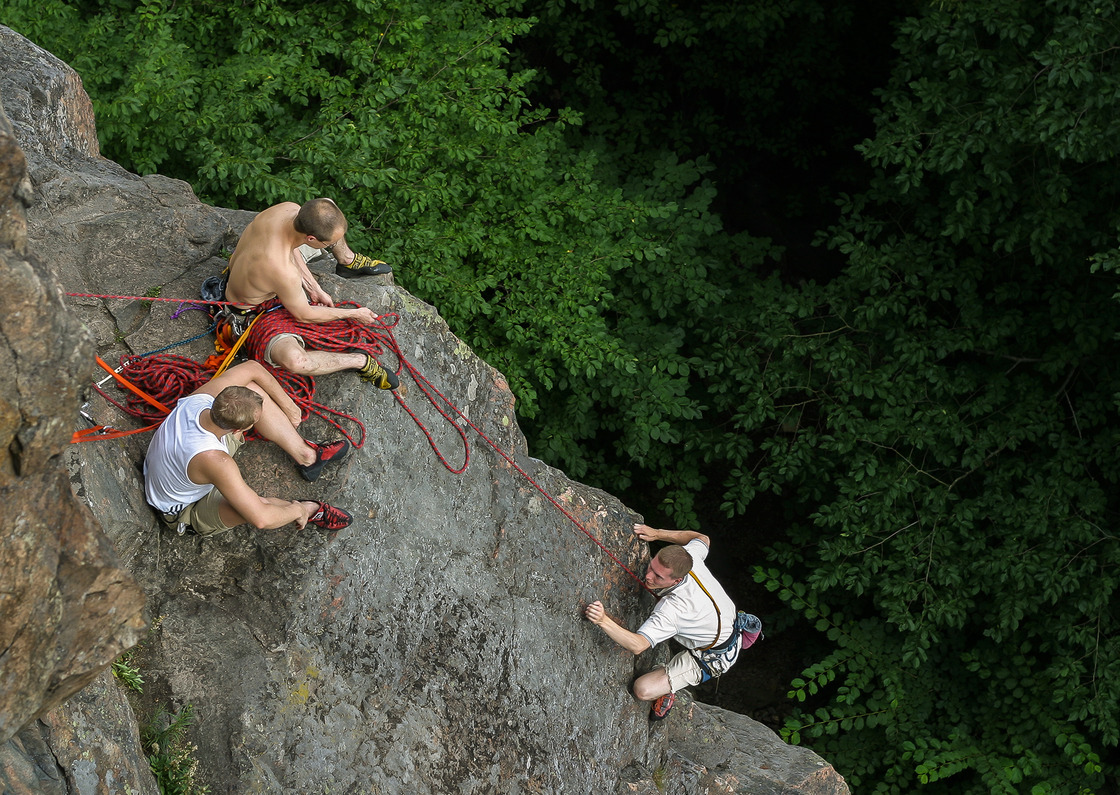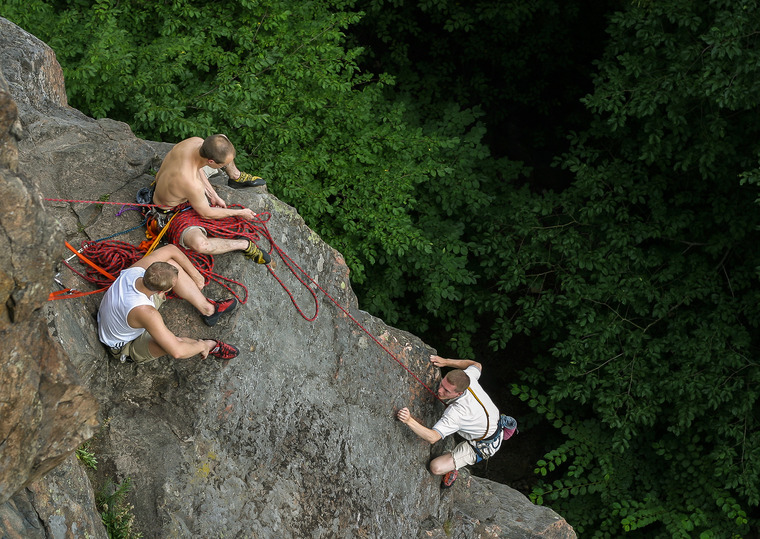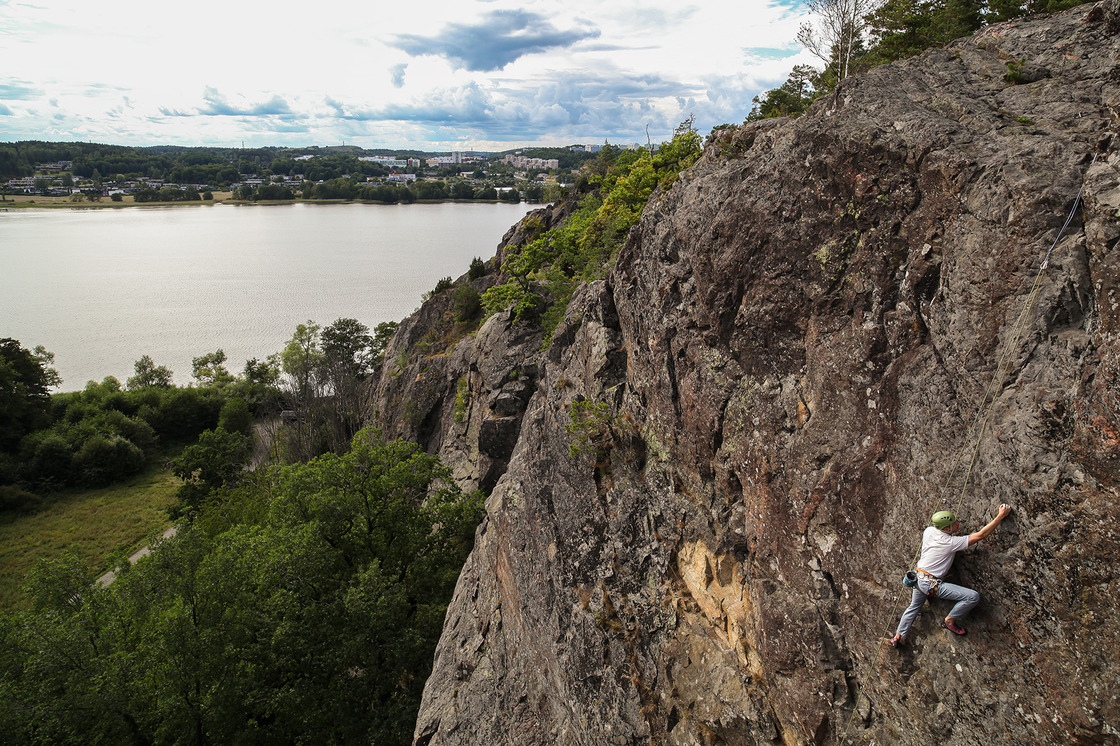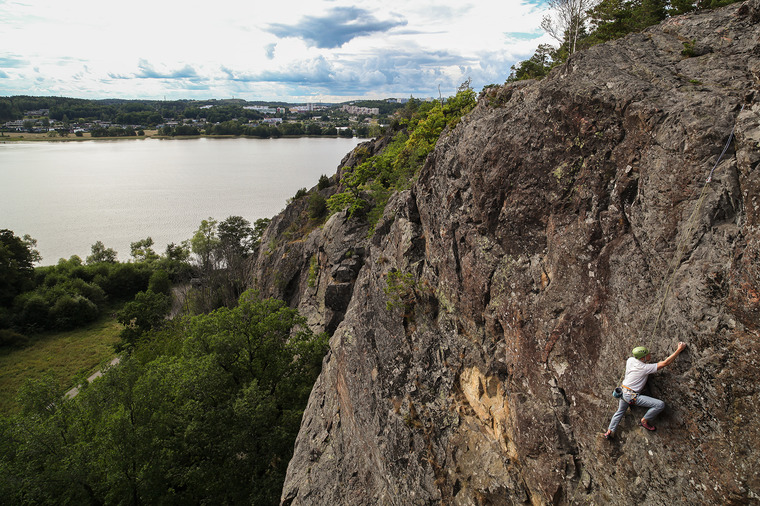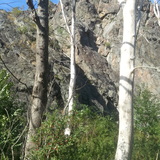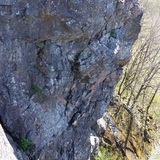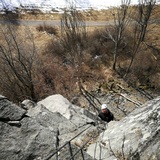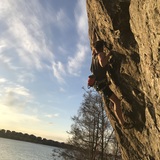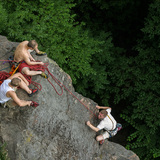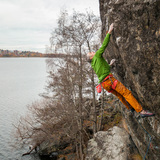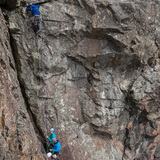Beautifully situated on a slope towards Albysjön, is the place where rock climbing in Stockholm once began. Häggsta ones were the main training crag for the Alps back in the day.
This is mainly a crag for traditional climbing and although Häggsta has a large selection of easier routes, you still have to look at the crag with respect as the placements are not always that good. It is usually possible to find some placements, but it can be tricky to get them to sit well and there are several passages where you must not fall, even on the easier routes. The rock is a bit slippery and polished in places and it can be hollow and loose in places. Clean and distinctive crack lines where you can put in a lot of gear are almost nowhere to be seen.
The south-facing wall is up to 40 meters high and around 200 meters long. The face is mostly vertical but elements of both slabs and overhang can be found. The west side (Sjösidan) is facing the sea and is about 120 meters long, and the routes here are generally a bit steeper and much shorter, between 8-15 meters.
If you look at the numbers of sport-routes you might think it's quite many but don't expect too much from that, quite often they were sparsely bolted long ago or you have to climb some other trad-route to get to the start. There are some completely bolted routes tough, but often they are quite Short.
Häggsta is characterized by a relaxed and calm atmosphere and a visit in early spring is highly recommended as the south-facing main wall gets really warm and dries quickly.
There might be a good idea to steep down in the grade for a while and choose some long easy classic with one or two stands along the way, this is really recommended and that's where Häggsta shines these days. There are also quite many easily accessible anchors at the top if you want to rig a toprope. For example, above Fyrbultsväggen and Långfredagsväggen it is close to the edge and easy to rig top-rope from above.
There is a lot of fixed equipment of different models, ages and quality scattered on the rock. There are still a number of large old ring-bolts placed on some ledges and elsewhere. A couple of these ring-bolts have been picked out by hand, back them up. A number of newer anchors are also scattered at the top of the crag.
On the west side, the crag is partly overhanging, and in its northern part, there are some routes on a terrifying roof/overhang. The main part of that big overhang has recently fallen down into the sea which means that a couple of routes are gone, including the famous Eliminator/Sjötaket (8b).
At the bottom of the meadow, down at the lake and around the corner there are some short and bouldery (8 meters) newly renovated sports routes very nicely located next to the water with a pleasant evening sun.
Ramp-väggen is a popular sector for courses as it houses a couple of nice low-angled cracks as well as two fully bolted really easy routes. Nya väggen also attracts some climbers/beginners, despite being a bit hidden behind trees and with a not-so-cosy environment.
Environment: South facing and west facing. Mostly open for the sun, but some shadow here and there down at the base. Excellent in spring/autumn - possible winter climbing! Dries very quickly.
The area below the south-facing wall is very child friendly with a small meadow next to the cliff where the children can play and also with plenty of space for overnight stay.
